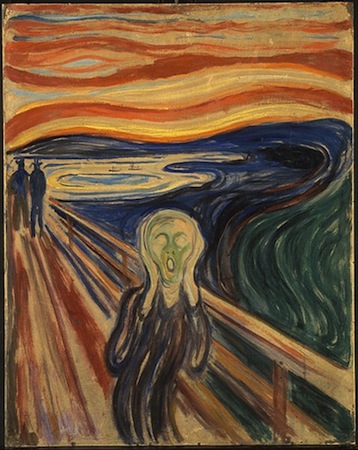Ahmad Banki’s Portfolio
 I embarked on my UDL odyssey with the impression that it is primarily about students with disabilities who need special accommodations. But before long I realized that UDL is much more than that.
I embarked on my UDL odyssey with the impression that it is primarily about students with disabilities who need special accommodations. But before long I realized that UDL is much more than that.
UDL is a major transformation of one’s orientation to education. UDL is a way of looking at the world. UDL is a way of life.
I have made a 20-minute video which surveys my UDL journey:
In the light of my training in the UDL community of practice, I developed a number of practical observations and methods to enhance my course designs pedagogically.
- A flipped classroom model that alternates between synchronous and asynchronous activities can have powerful UDL advantages over a traditional design. Since UDL recognizes the unique capacity of every individual, an asynchronous learning environment provides the learner with the opportunity to engage with the material in a more effective and authentic way.
- There is an overall principle of openness and lack of restriction in UDL. By and large, the course material – such as class notes, lecture videos and exam solutions – are to be made available to the students. Students should feel the freedom of being able to consult the sources which they need in a format that is accessible to them.
- Try to provide subtitles and descriptions for videos and images to enhance inclusiveness. In general, text is more preferred to image. Use file formats which are compatible with screen readers, and texts which can be enlarged.
- In the formative stages of learning, give students multiple tries and allow them to redo the questions and quizzes without any penalty. This will be ideal if the teacher develops multiple versions of the questions expressed or formatted slightly differently, and assigned randomly. This may entails updating the students’ grade.
- If through persistent practice students achieve perfection, they would merit a very high grade, up to 100%. If students are willing to keep trying until they master the competencies of the course, then there should be no hesitation or restriction from the teacher’s side. What is far from UDL is idealism. In UDL, perfection is to be defined and measured according to the students’ level and capacity. It does not mean performing at the level of an expert.
- UDL acknowledges multiple capacities of not only students, but also teachers. Just as there is no one-size-fits-all way of learning for students, there is no one-size-fits-all way of teaching for instructors, even though they may be teaching the same course. UDL makes a subtle distinction between the appearance of equity and genuine equity. If we define equity as equality of opportunity, then the unique qualities of the individuals must be taken into account.
- The official ponderations of courses are overgeneralizations which are against UDL principles. That is if they are understood as universal prescriptions in absolute terms. However, they can be meaningful in relative terms for each individual learner. A 3-0-3 ponderation does not mean three hours of lecture and three hours of homework per week, but it means a proportionate allocation of the learner’s time over the two activities.
At the beginning of every course I give the students a short reflective question:
Your teacher is committed to the principles of Universal Design for Learning (UDL), including:
• There are several ways of learning and many ways of demonstrating one’s learning.
• The unique abilities of each student is a precious asset that they bring into the class.
• Diversity is appreciated.
It’s the teacher’s responsibility to help each student find the most effective way of engagement and expression for them. Given the above points, in what ways can your teacher facilitate your success in this course? What would you like him to keep in mind when dealing with you as a precious and unique person?
What is most empowering about UDL is that while we all have limited capacities, UDL looks at the capacity, not the limitation. By so doing, it transforms the limitation into a means of learning and growth. Edvard Munch (1863-1944) was a brilliant Norwegian painter who is famous for painting The Scream. It represents the angst and uncertainty which pervade the existential state of humankind, especially recently.

He wrote:
A German once said to me: “But you could rid yourself of many of your troubles.” To which I replied: “They are part of me and my art. They are indistinguishable from me, and it would destroy my art. I want to keep those sufferings.”
I was inspired by both his painting and his statement as I was developing my project on public speaking skills. This indeed is the essence of art, and we are all capable of it: taking in an unpleasant feeling with compassion, and transforming it into a constructive unit of one’s passion. Therefore, we can all be artists, maybe not aesthetically, but synthetically.
As UDL permeated my mind, it became a way of seeing, a mode of living, a state of being.
UDL: Unitive Diversification of Life
I start my day not to view
What I’m accustomed to,
But things that are new.
The unexpected I expect.
There’s nothing I reject.
To me, all is perfect.
No colour is hated.
At the root they’re related.
Diversity is appreciated.
UDL workshop during Ped week 2020:
References and recommended readings:
Ambrose, S. A., Bridges, M. W., Di Pietro, M., Lovett, M. C., & Norman, M. K. (2010). How learning works: Seven research-based principles for smart teaching. John Wiley & Sons. Chapter 4.
Carnegie, D., & United Y.M.C.A. Schools. (1925). Public speaking. New York: Association Press.
Gravel, J.W., Edwards L.A., Buttimer C.J., Rose D.H. Universal design for learning in post-secondary education: Reflections on principles and their application. In: Burgstahler, S. (2015). Universal design in higher education : From principles to practice (Second ed.). Cambridge, Massachusetts: Harvard Education Press.
Jackson, R. (2009). Never work harder than your students & other principles of great teaching. Alexandria, VA: Association for Supervision and Curriculum Development. Chapter 2 & 8.
Mitchell, D. (2014). What really works in special and inclusive education : Using evidence-based teaching strategies (Second ed.). London; New York: Routledge. Chapter 22.


